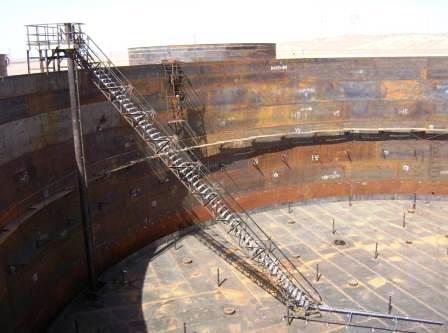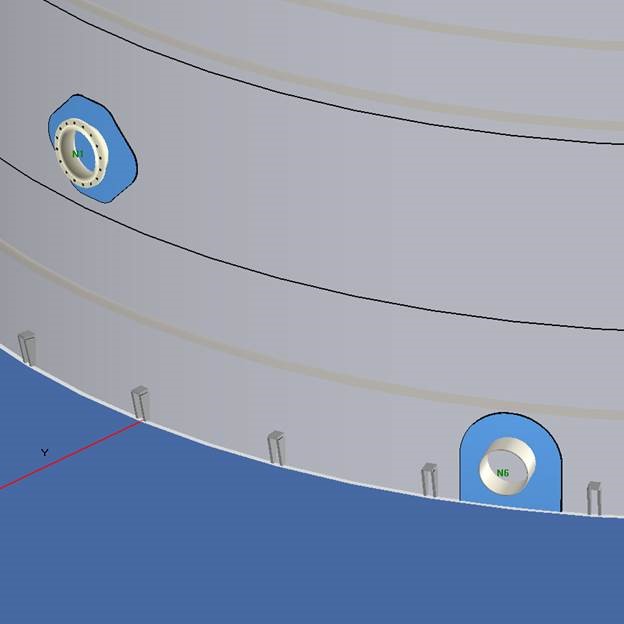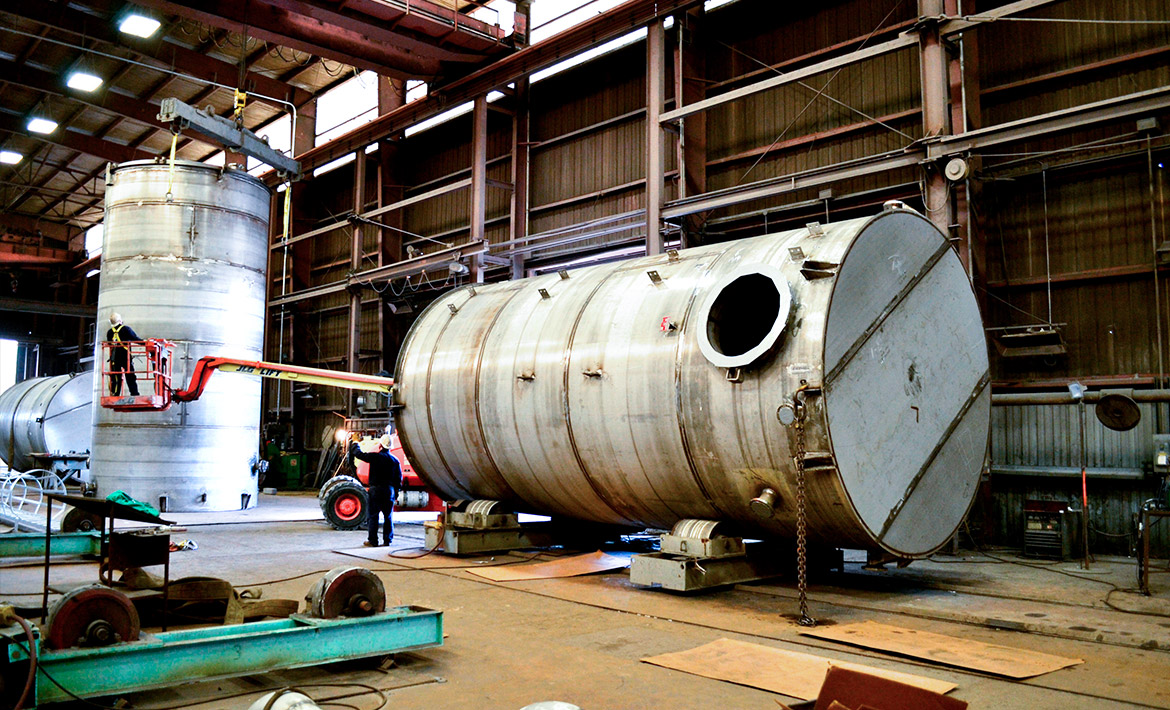A Detailed Check Out the Installment Process of Welding Evaluation Techniques
Welding examination is an essential process that ensures structural integrity and safety. The setup of evaluation techniques entails several methodical actions, each integral to attaining dependable results. From preparation and device choice to carrying out non-destructive and visual examinations, each phase demands mindful interest. Comprehending these treatments can significantly improve quality control in welding tasks. What difficulties emerge in applying these strategies, and how can they be effectively dealt with?
Recognizing the Importance of Welding Evaluation
Welding examination is a vital component of making certain structural integrity and safety in construction and production processes. This technique includes evaluating bonded joints for problems, making certain that they satisfy certain criteria and laws. By methodically determining weld top quality, assessors can determine issues such as splits, gaps, and incomplete combination, which can endanger the strength and toughness of structures.
The relevance of welding examination expands past immediate safety and security worries; it helps avoid pricey failures and prospective dangers in the lengthy term. Reliable assessment techniques foster compliance with sector criteria, consequently boosting the overall dependability of bonded components. Additionally, a robust examination process adds to preserving the track record of producers and building contractors, as it ensures customers of the top quality of their projects. Ultimately, understanding the importance of welding examination is essential for advertising risk-free building and construction methods and guaranteeing the longevity of vital infrastructure and items.
Choosing the Right Tools for Examination
When selecting the ideal tools for inspection, it is important to contemplate the details needs of the welding process and the materials included. Various inspection techniques, such as visual, ultrasonic, and radiographic screening, necessitate distinctive devices customized to their one-of-a-kind demands. For aesthetic evaluations, devices like magnifying calipers and glasses are important for examining weld top quality. Ultrasonic screening calls for specific equipment with the ability of transferring and getting acoustic waves to identify internal imperfections. Radiographic testing, on the other hand, utilizes X-ray or gamma-ray sources alongside sensitive film or electronic detectors to reveal inconsistencies.
Furthermore, personal safety equipment (PPE) is vital to guarantee the safety and security of inspectors throughout analyses. Selecting the right tools not only improves the accuracy of inspections but also adds to the overall stability and safety of the welding task. As a result, an extensive understanding of readily available devices and their applications is vital for efficient welding evaluation.
Planning for the Assessment Refine
Before launching the inspection procedure, it is necessary to establish a thorough strategy that details the scope and objectives of the analysis. This plan must consist of details standards that specify what comprises acceptable high quality in the welding work being checked. Determining the relevant codes and criteria is important, as they will certainly lead the inspection requirements and approaches.
Additionally, workers entailed in the inspection has to be adequately trained and accredited in welding evaluation methods to assure integrity and accuracy. A list can be valuable in organizing the various facets of the assessment, ranging from tools preparedness to ecological conditions that can influence the evaluation.

Logistical factors to consider such as organizing, offered sources, and communication between group participants must be resolved. By preparing systematically, examiners can enhance the performance of the examination and guarantee that all essential factors are duly thought about before waging the examination itself.
Carrying Out Aesthetic Inspections

Carrying out visual inspections is a necessary action in the welding evaluation process, calling for careful prep work to guarantee efficient examination. Examiners have to be acquainted with key issue indicators that can signify prospective problems in Visit Your URL weld top quality. By concentrating on these aspects, one can boost the total integrity of the examination outcomes.
Preparing for Visual Inspection
Visual inspection works as an important very first step in the welding inspection process, guaranteeing that any prospective problems are recognized early (API 650 Welding Inspection). Correct prep work is important for efficient aesthetic evaluation. Inspectors need to start by reviewing relevant paperwork, including welding treatments and requirements, to comprehend the task requirements. They have to gather needed devices, such as multiplying glasses, flashlights, and proper personal safety equipment (PPE) A thorough assessment of the examination location is vital; examiners must confirm it is tidy and cost-free of obstructions. Additionally, it is very important to establish excellent lights problems to enhance presence of welds. By taking these primary actions, inspectors can develop a setting for identifying inconsistencies and assuring the stability of the welded structures
Secret Problem Indicators
An extensive understanding of key flaw indications is important during aesthetic evaluations to guarantee the top quality and safety and security of bonded joints. Examiners should concentrate on specific signs such as fractures, porosity, damages, and insufficient combination. Cracks may look like sharp lines and can jeopardize structural stability. Porosity manifests as little openings that can weaken weld toughness. Undercuts, which are grooves along the weld side, can cause stress and anxiety focus. Insufficient combination shows that the weld steel did not effectively bond with the base material, resulting in a weak joint. By systematically recognizing these problems, inspectors can identify compliance with sector standards and boost the overall reliability of welded frameworks, inevitably adding to more secure operational problems.
Carrying Out Non-Destructive Checking Techniques

Numerous non-destructive testing (NDT) strategies are essential to guaranteeing the integrity of welded frameworks without jeopardizing their functionality. These approaches permit examiners to evaluate weld quality and find flaws without triggering damages to the materials being tested. Typical NDT techniques consist of ultrasonic screening, radiographic screening, magnetic particle testing, and dye penetrant testing. Each technique offers a particular purpose, addressing various kinds of imperfections such as fractures, porosity, or incomplete blend.
Applying NDT techniques needs a methodical approach, beginning with selecting the proper technique based upon the products and the nature of the weld. Educating personnel in these strategies is necessary for exact outcomes. Furthermore, establishing clear treatments and requirements warranties consistency throughout the assessment process. By integrating NDT right into the welding inspection workflow, companies can enhance the reliability of their products while reducing possible dangers associated with structural failures. This positive technique eventually adds to preserving safety and top quality criteria in bonded constructions.
Evaluating and recording Inspection Results
Effective documentation and evaluation of evaluation outcomes are necessary components of the go right here welding assessment procedure. Exact records of evaluation searchings for work as a recommendation for high quality guarantee and conformity with sector standards. API 650 Welding Inspection. Examiners ought to make use of digital platforms or structured kinds to log details such as the type of weld, evaluation techniques used, and any type of disparities determined during the analysis
Detailed analysis is important once information is collected. This entails comparing results versus developed requirements to determine trends or reoccuring issues. Statistical devices might be used to measure problems and assess their effect on total weld top quality.
Efficient communication of searchings for to appropriate stakeholders is necessary. Summaries and reports should be clear and succinct, highlighting crucial understandings and referrals for rehabilitative actions. By methodically analyzing and documenting assessment outcomes, organizations can foster continual enhancement in welding methods and improve item stability.
Regularly Asked Concerns
What Certifications Are Needed to Come To Be a Welding Assessor?
To come to be a welding inspector, one generally needs appropriate certifications such as AWS CWI, along with experience in welding practices, knowledge of welding codes, and proficiency in examination methods to ensure quality and safety requirements.
Exactly How Typically Should Welding Inspections Be Carried Out?
Welding assessments should be carried out on a regular basis, commonly after each weld is completed, and periodically throughout projects. Elements such as task intricacy, sector requirements, and governing requirements can affect the regularity of these evaluations.
What Is the Expense of Welding Examination Providers?
The price of welding evaluation solutions differs substantially based upon elements such as job intricacy, dimension, and place. Normally, rates vary from $100 to $150 per hour, with additional fees for specialized screening and accreditations.
Exist Certifications for Welding Inspectors?
Yes, there are different accreditations for welding examiners, consisting of those offered by the American Welding Society (AWS) and the have a peek here International Institute of Welding (IIW) These certifications ensure assessors possess the required abilities and expertise for effective assessments.

Just how Do I Choose an Assessment Service Service Provider?
To choose an evaluation provider, one need to assess certifications, experience, sector track record, and consumer testimonials. In addition, contrasting solution offerings and rates can assist assure the selected supplier satisfies particular job needs successfully.
Furthermore, workers included in the examination has to be adequately trained and certified in welding inspection techniques to guarantee reliability and accuracy. Performing visual evaluations is an essential step in the welding evaluation procedure, requiring careful preparation to ensure efficient evaluation. Visual examination serves as a crucial initial action in the welding assessment process, assuring that any type of prospective issues are determined early. Reliable documents and evaluation of evaluation outcomes are essential parts of the welding inspection procedure. Welding assessments should be conducted routinely, generally after each weld is finished, and periodically throughout tasks.